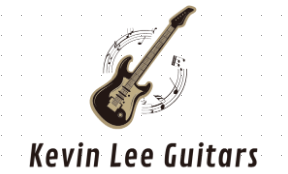Django Reinhardt Guitar Lesson: Mastering the Gypsy Jazz Style
Django Reinhardt, the legendary guitarist, is renowned for his unique approach to Gypsy jazz. His playing style, characterized by rapid arpeggios, intricate chord progressions, and a distinct rhythmic feel, has inspired countless guitarists. This lesson will delve into the techniques that define Django’s style and provide practical exercises to help you incorporate them into your playing.

Understanding Django’s Technique
1. The Modified Finger Technique:
Django Reinhardt lost the use of two fingers on his left hand in a fire, which led him to develop a unique playing technique using primarily his index and middle fingers. This limitation turned into a defining characteristic of his playing, emphasizing arpeggios and three-note chord shapes.
2. Gypsy Picking:
One of the hallmarks of Django’s style is Gypsy picking. This involves a rest-stroke picking technique where the pick rests on the next string after a downstroke, allowing for a powerful and percussive sound.
3. Rhythmic Precision:
Django’s rhythm playing is just as important as his lead playing. The “La Pompe” rhythm is essential in Gypsy jazz, providing a driving, percussive backdrop for solos.
Getting Started: Essential Techniques
1. Basic Arpeggios:
Start by practicing major and minor arpeggios across different positions on the neck. Focus on clean, precise picking and smooth transitions between notes.
Exercise:
Play a G major arpeggio: G (3rd fret, 6th string) – B (2nd fret, 5th string) – D (open 4th string) – G (5th fret, 4th string) – B (4th fret, 3rd string) – D (3rd fret, 2nd string) – G (3rd fret, 1st string).
2. Gypsy Picking Exercise:
Practice the rest-stroke picking technique by playing a simple scale, such as the G major scale, and focusing on making every downstroke rest on the next string.
Exercise:
G major scale: G (3rd fret, 6th string) – A (5th fret, 6th string) – B (2nd fret, 5th string) – C (3rd fret, 5th string) – D (5th fret, 5th string) – E (2nd fret, 4th string) – F# (4th fret, 4th string) – G (5th fret, 4th string).
3. La Pompe Rhythm:
Learn the basic “La Pompe” rhythm, which is crucial for Gypsy jazz rhythm guitar.
Exercise:
Play a G major chord (3rd fret, 6th string) with a downstroke, then quickly mute the strings with the side of your hand. Follow this with an upstroke on the muted strings, and repeat.
Advanced Techniques
1. Django’s Chromatic Runs:
Django often used chromatic runs to add tension and interest to his solos. Practice playing chromatic lines up and down the fretboard, incorporating slides and hammer-ons.
Exercise:
Play a chromatic run starting on G (3rd fret, 6th string) and move up to D (5th fret, 5th string), playing every fret in between.
2. Incorporating Minor 6th and Diminished Chords:
Django frequently used minor 6th and diminished chords in his playing. Practice these shapes and incorporate them into your chord progressions.
Exercise:
Play an E minor 6th chord (open 6th string) – G (3rd fret, 6th string) – B (2nd fret, 5th string) – C# (4th fret, 5th string).
3. Soloing with Arpeggios:
Focus on soloing using arpeggios instead of scales. This approach is central to Django’s sound and adds a melodic, vocal quality to your solos.
Exercise:
Over a G major chord, solo using only the notes G, B, and D in different positions on the neck.
Putting It All Together: Play Like Django
1. Learn Django’s Solos:
Transcribe and learn some of Django’s iconic solos note-for-note. This will give you insight into his phrasing and note choices.
Exercise:
Start with the solo from “Minor Swing.” Break it down into small sections, and practice each section slowly before speeding up.
2. Create Your Own Licks:
Use the techniques and concepts you’ve learned to create your own Gypsy jazz licks. Focus on blending arpeggios, chromatic runs, and rhythmic variations.
Exercise:
Write a 4-bar lick using a combination of arpeggios and chromatic runs. Play it over a simple backing track in G major.
3. Play with Others:
Gypsy jazz is a communal style of music. Playing with other musicians will help you develop your timing, rhythm, and improvisational skills.
Exercise:
Join a local Gypsy jazz jam session or play along with backing tracks online. Focus on maintaining the groove and interacting musically with the other players.
Conclusion
Mastering Django Reinhardt’s style requires dedication and practice, but the journey is immensely rewarding. By incorporating his unique techniques into your playing, you’ll not only improve your technical skills but also gain a deeper appreciation for the rich tradition of Gypsy jazz. Remember, the key to playing like Django is to blend precision with passion, creating music that is both technically brilliant and emotionally compelling. Happy playing!




